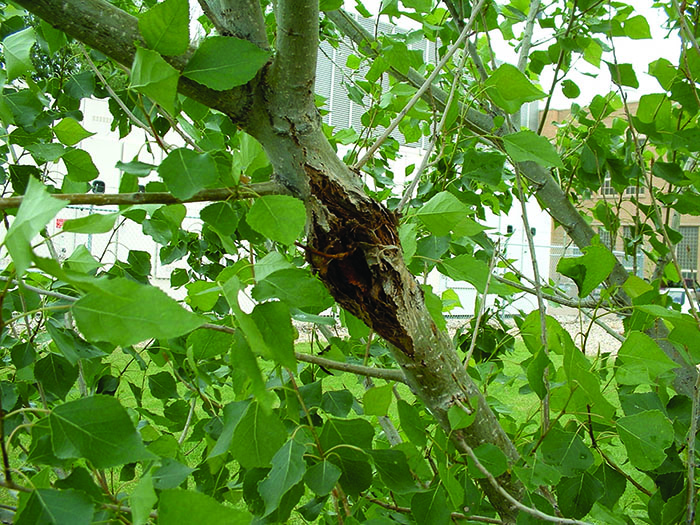
Canker diseases on trees
Multiple Causes
Canker diseases of trees have different causes depending on the species of tree. Most cankers are caused by a fungus or bacteria, but get into the tree though wounds. Some canker diseases can infect the tree through the leaves.
The spores of the fungi are often dispersed by wind or rain and sometimes transferred by animals or insects. Bacteria are often secondary infections. There are many ways that the fungi or bacterium can enter the tree including wounds caused by nicks or pruning; damage caused by hail, wind or storms; sunscald; or winter kill.
The disease causes bark and the underlying tissue (cambium) to die. Cankers are unsightly and over time, can affect the health of the tree.
Symptoms:
- Cankers are usually small to large, round or oval sunken areas on the trunk or branches, often centered on a wound or branch stub.
- The bark can split open and an ooze of sap may appear.
Control:
- There are no known treatments to cure a canker infection.
- The disease can be pruned out. The cut should be made below the canker, down to healthy wood.
- Prune in dry weather, as moisture can spread the disease.
- Make proper cuts when pruning: do not prune into the branch collar or leave stubs.
- Never apply pruning paint (even during normal pruning) as this can trap bacteria or fungi and cause disease.
- Sterilize your pruners in between each cut to avoid spreading the disease. Use a disenfectant like Lysol (at label directions for concentration) or an alcohol-based disinfectant in a spray bottle. Spritz it on your pruning tools and wipe with a soft cloth. Do not use bleach as it will corrode your tools.
- If the main trunk is infected the tree may be removed to prevent infecting other trees nearby.

